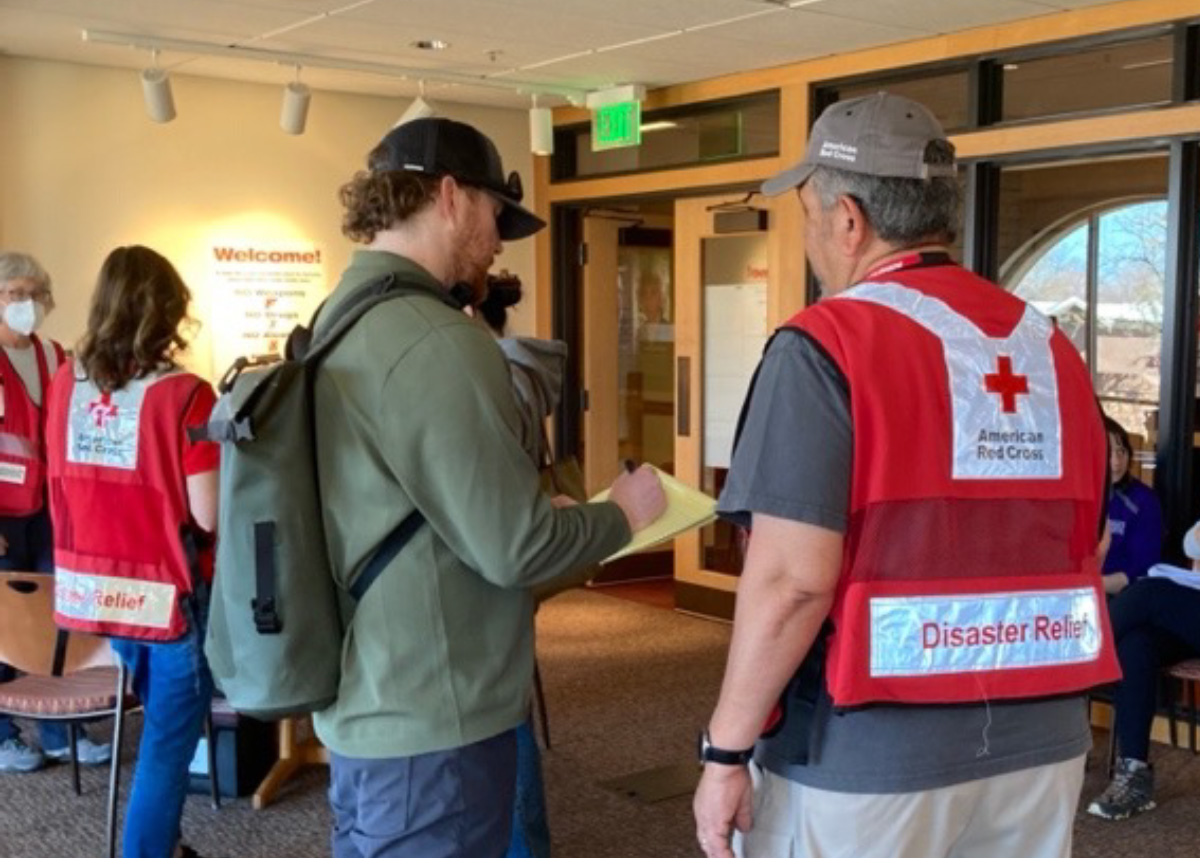Unique university partnership gives students the critical training and skills to respond to complex humanitarian crises on a global scale
May 8, 2023
In today’s global climate, more and more crises are occurring that not only involve natural hazards like tornadoes or floods, but also include conflict and mass displacement. Trained personnel are critical to the provision of appropriate responses to such complex humanitarian crises around the world. To address this growing need globally, two professors from two Colorado universities—the University of Denver and University of Colorado Anschutz Medical Campus—have created an experiential ‘simulation’ model that prepares students for humanitarian work. In this model, classroom-based learning leads up to a broad-scale one-day live action exercise, set in a fictional place called “Korbelia” on the DU campus.
Back in 2011, Clinical Associate Professor Chen Reis and Assistant Professor Courtney Welton-Mitchell saw an educational gap that needed to be filled while working together at DU: there were simply not enough graduating students that had the necessary skills and knowledge to work in the growing humanitarian disaster response field. Following months of discussion and planning, the two launched their first humanitarian crisis simulation. According to Reis, “We saw a need to provide students with a safe environment to develop and practice the skills necessary for success in responding to complex humanitarian crises.”
Fast forward to 2023: Reis, who is still with the Korbel School of International Studies, and Welton-Mitchell, who is now faculty with the Colorado School of Public Health at CU Anschutz, have continued to partner over the years to provide roughly 18-30 students each year, from both universities, with an experiential learning opportunity. The simulation is a class-culminating experience that includes many actors—both in person and remote—who take students through the ins and outs of a simulated complex humanitarian crisis.
For the simulation on April 30 on the DU campus, students were provided information about the crisis in Korbelia through course content delivered at both universities in the weeks leading up to the event. On the day of the live action simulation, student participants were tasked with assessing the needs of the affected population while working in teams to design an intervention to address protection and public health related issues such as mental health, gender-based violence, safety, and security. Students were assigned a role and then rotated in groups from one ‘station’ to the next, interacting with dozens of expert volunteers who played the part of government officials, aid workers, medics and other first responders, refugees, and media, giving participants a glimpse into the shifting dynamics of a real humanitarian crisis.
“The simulation is an opportunity for students to engage in problem solving associated with a fictitious yet realistic humanitarian crisis,” said Welton-Mitchell, who directs the Certificate in Climate and Disaster Resilience in the Colorado School of Public Health. “Students get feedback about their strengths and areas for improvement from experts in the field, and engage in self-reflection, all designed to support them in pursuing this line of work if of interest.”
Once the students rotate through all stations, gather the necessary information from the actors, and finalize an intervention proposal, they then present it and try to convince a panel of fictional donors to fund their program. The combination of these activities helps students to utilize skills learned in the classroom and to prepare for the challenges associated with working in complex humanitarian crises.
Recognizing the benefit of this ongoing partnership between Drs. Reis and Welton-Mitchell, the Korbel School and the Colorado School of Public Health signed an MOU to officially host the event together. In recent years, global emergency medicine colleagues from the CU School of Medicine have joined the event to stage a medical tent, enhancing the overall public health components in the simulation. This year, the Red Cross also joined the event for the first time, providing a mass care and sheltering station for internally displaced refugee groups—lending their expertise to enhance the realism of the simulation.
“The medical tent allows students to engage with the medical side of response from a public health perspective, interacting with actual medical personnel. Similarly, students engage with actual Red Cross shelter managers to better understand what that type of work involves during a crisis,” added Welton-Mitchell.
Throughout the simulation, there is an emphasis on engaging with local experts, and challenging historical power inequities often associated with global health and humanitarian response frameworks. The hope according to Reis is that “we will develop professionals who are going to be thoughtful about these issues and who are not replicating harmful patterns in delivery of aid.”


